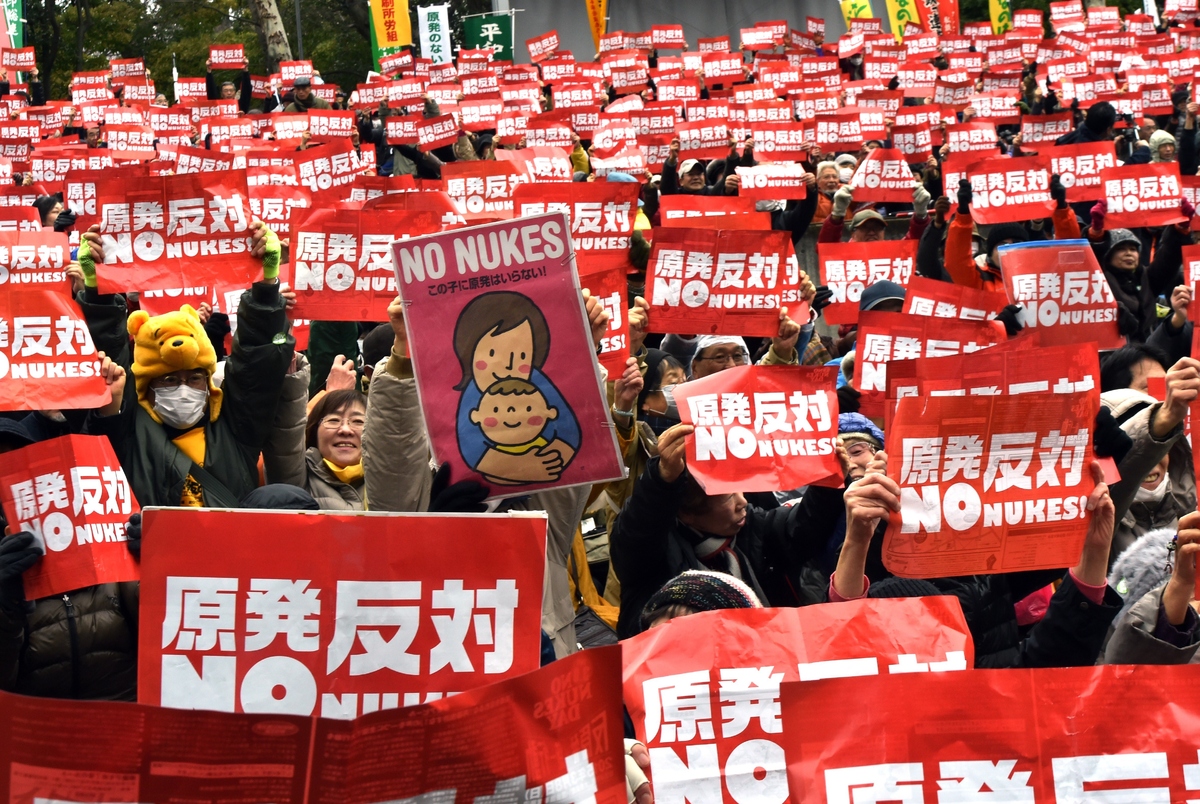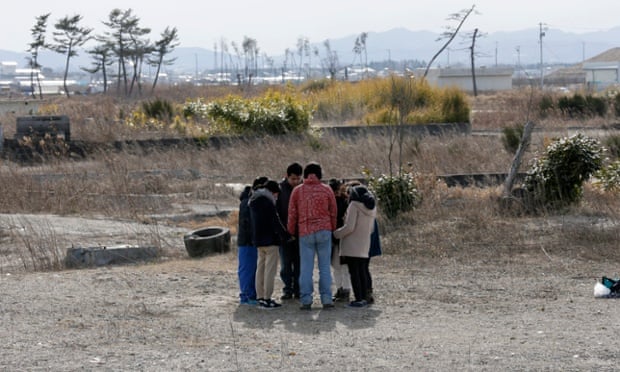Ernest Sternglass, Physicist and Nuclear Critic, Dies at 91 By KENNETH CHANG
FEB. 20, 2015

Ernest J. Sternglass, left, discussing his research on nuclear radiation in 1981 with Victor Navasky, editor of The Nation. Credit Keith Meyers/The New York Times
Ernest J. Sternglass, whose research in radiation physics laid the foundation for important technological advances and who became a prominent opponent of nuclear weapons, died on Feb. 12 at his home in Ithaca, N.Y. He was 91.
The cause was heart failure, said his son, Daniel.
Early in his career, Dr. Sternglass figured out a basic interaction between electrons and metals, which was developed into cameras that could take images in dimly lit places. NASA adopted the technology for a television camera on Apollo 11, taking video of Neil Armstrong descending to the surface of the moon.
He later pioneered technology for the use of solid-state electronic sensors instead of photographic film for taking medical X-rays.
Before those successes, in 1947, when he was a recent college graduate working at the Naval Ordnance Laboratory in Washington, he had a formative meeting with Albert Einstein.
Dr. Sternglass was conducting experiments in which he bombarded a piece of metal with a beam of electrons. The beam caused other electrons to be ejected in a process called secondary electron emissions, and the military thought the process could be used to see in poorly lit areas.
Dr. Sternglass wrote to Einstein, challenging the prevailing theory for explaining such electron emissions and offering his own ideas. Einstein invited him to visit him at his home in Princeton, N.J., and they spent an afternoon in discussions. Dr. Sternglass later recounted that Einstein discouraged him from pursuing theoretical physics and gave him unexpected advice: “Don’t go back to school. They will try to crush every bit of originality out of you. Don’t go back to graduate school.”
The two continued corresponding, and Einstein encouraged the electron research.
Dr. Sternglass did go back to school, but he followed Einstein’s advice to focus on the practical. After earning his doctorate in engineering physics from Cornell in 1953, he joined the Westinghouse Research Laboratory, and his work there on secondary electron emissions led to a highly sensitive camera tube that was used in the video camera on Apollo 11.
In the 1960s, Dr. Sternglass and other researchers concluded that medical X-rays harmed developing fetuses. Babies whose mothers had X-rays, they found, later had higher rates of infant mortality and childhood leukemia. That, in term, led him to testify at a Senate committee hearing in favor of a treaty to ban aboveground nuclear testing. The radioactive fallout from such tests, Dr. Sternglass testified, was similarly harmful.
The Senate ratified the treaty. “He felt that was one of the major achievements in his life,” Daniel Sternglass said.
In 1967, Dr. Sternglass left Westinghouse to become a professor of radiation physics at the University of Pittsburgh School of Medicine.
That same year the Atomic Energy Commission proposed Project Ketch, which would use nuclear weapons for a peaceful purpose: an underground explosion of an atomic bomb in central Pennsylvania to create a cavern to store natural gas.
Continue reading the main story
In the 1981 book “Nuclear Witnesses” by Leslie J. Freeman, Dr. Sternglass recounted learning about Project Ketch from a friend who was an editor at The Pittsburgh Post-Gazette.
“These people are crazy,” Dr. Sternglass recalled telling his friend. “This is the heart of dairy country. Millions of curies of radioactive iodine would poison the milk all the way up to New England, all the way to New York, Washington, down to Philadelphia. This is madness.”
Dr. Sternglass wrote an opinion article opposing Project Ketch and became a frequent critic of nuclear weapons and nuclear power, making controversial claims such as that fallout from nuclear tests was to blame for a halt to a two-decade decline in infant mortality. He argued that from 1950 on, such fallout had contributed to the deaths of 400,000 babies in the United States alone.
“He believed very strongly that these correlations existed, and these effects were real,” Daniel Sternglass said. Other scientists, however, questioned many of his assumptions, as well as his conclusions.
After the partial meltdown of the Three Mile Island nuclear power plant in Pennsylvania in 1979, Dr. Sternglass measured radiation levels at the Harrisburg airport, two miles from the reactors, and found them to be 15 times higher than normal.
“This corresponds to a major fallout pattern from a nuclear bomb test,” he told The Associated Press.
Critics accused Dr. Sternglass of inflaming fears. “Dr. Ernest Sternglass, a perennial campaigner against nuclear power, is accused by neutral health authorities of mishandling data to demonstrate health damage,” an editorial in The New York Times said. “Even in nuclear fables there are people who cry wolf.”
George Wald, a Nobel Prize-winning biologist at Harvard, took note of the criticisms in his foreword to Dr. Sternglass’s 1981 book, “Secret Fallout: Low-Level Radiation From Hiroshima to Three Mile Island.”
“At times in this book I had the feeling he was going a little far,” Dr. Wald wrote. “But then I never could be sure, once I had read over carefully what he was saying, that it was too far. The truth is that once one starts down this path, it’s hard to know where or whether to stop. And on the fundamental issues, Sternglass is dealing with a very strong case.”
In the 1980s, Dr. Sternglass, along with Donald Sashin and other colleagues at Pittsburgh, demonstrated how to record medical X-rays with solid-state sensors rather than photographic film. The sensors, more sensitive than film, reduced radiation doses. With the images stored digitally, computer algorithms, now commonplace in image editing programs like Photoshop, could easily increase contrast to allow doctors to more easily see tumors and other details.
Ernest Joachim Sternglass was born on Sept. 24, 1923, in Berlin. Both his parents were doctors. When the Nazi SS surrounded a section of a city where a large number of Jewish professionals, including Dr. Sternglass’s father, had offices, one of the SS agents, a patient of his father’s, allowed his father to go home. The family soon left Germany, moving to New York City in 1938.
After earning his undergraduate degree in electrical engineering from Cornell in 1944, he served in the Navy and then began working at the Naval Ordnance Laboratory. In 1948, he returned to Cornell to begin his graduate studies.
His first marriage ended in divorce. His second wife, Marilyn, died in 2004.
In addition to his son, Dr. Sternglass is survived by a daughter, Susan Sternglass Noble, and four grandchildren.
After retiring from the University of Pittsburgh in 1983, Dr. Sternglass looked for additional projects. During the era of nuclear tests, scientists had tracked the dispersion of radiation by looking at the levels of strontium-90 — a radioactive element produced by nuclear fission reactions with chemical properties similar to calcium — in baby teeth. They found that the levels increased in the 1950s, when testing was at its height.
Dr. Sternglass and Jay Gould, a statistician, came up with the idea of doing a similar study looking at children living around nuclear power plants. The research, which led to the founding of the
Radiation and Public Health Project, found higher strontium levels in the baby teeth of children living closer to the plants.
http://www.nytimes.com/2015/02/21/science/ernest-sternglass-physicist-and-nuclear-critic-dies-at-91.html 







